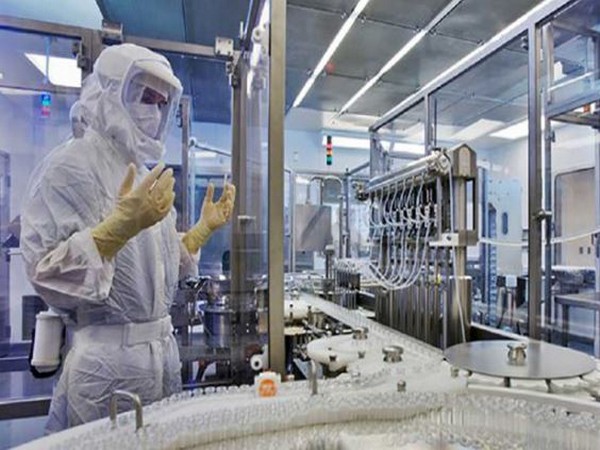
North America is Big Pharma’s wet dream, with 45% of the global market share coming from just 4% of the total world population. Mayo Clinic found 70% of Americans are prescribed at least one medication including, antibiotics, anti-depressants, and painkillers. What better than to model the whole world, after this dream run?
OVER-DIAGNOSED AND OVER-MEDICATED
In 1976, Henry Gadsden, CEO of Merck &Co., told Fortune magazine, he wanted Merck “to be like chewing gum maker Wrigleys”. He said: “It has long been my dream to make drugs for healthy people because then Merck would be able to ‘sell to everyone’.” This interview was reproduced by Moynihan Cassels in his book, Selling Sickness. This strategy works to make everyone–a patient–and sell perpetual, chronic illnesses. The industry works overtime to widen boundaries of an illness, reduce the threshold for administering treatments, to create millions of new patients, billions in profit, and increased the cost of healthcare. “Diagnostic inflation and over-medication are rampant in the USA,” says Dr Gilbert Welch, MD, the author of the book Over-Diagnosed: Making People Sick in Pursuit of Health. Don’t get me wrong. Pharmaceuticals do save lives, and poor lifestyles contribute as well. However, one cannot ignore the sales and marketing strategies at work either.
CRAFTING ‘PATIENT JOURNEY MAPS’
Big Pharma deploys some of the most persuasive, ATL and BTL marketing strategies. Huge marketing budgets are used to craft “patient journey maps”, with a view to influence their medical choices and propel them towards newer, expensive treatments, contributing to the industry’s bottom line. For 2019, Journal of American Medical Assn. (JAMA) reported an annual spend of $30 billion on the marketing of drugs, disease awareness programs, TV commercials, sponsorships of patients’ advocacy groups, drug samples, conferences, and perks for prescribing doctors. Direct-to-consumer (DTC) advertisements have seen the largest increase in spent. These ads increase “awareness” about health conditions, encouraging consumers to consult a physician, thereby increasing footfall in clinics, adding prospects to the sales funnel. Once the prospect walks into a clinic, the backdoor deal with prescribing doctors may take care of prescription numbers.
PUSHING THE ENVELOPE IN INDIA
Big Pharma implements similar strategies in India. Sometimes, they flirt with local laws to push the envelope, and sometimes they arm-twist us. Indian laws do not allow DTC advertising other than for family planning, overall health awareness, and hygiene. However, these lines got blurred during the pandemic. But efforts are underway to shape the industry thought process, albeit delicately. A search on PubMed Central shows a huge number of research papers on how DTC ads can help India. In 2022, the government issued a draft code for marketing practices, limiting the number of samples for prescribing doctors. This came with a bar on gifts and recreational offers for theatre, musicals, sporting events, skiing, cruises, spas, trips, and such perks for prescribing doctors. But the devil is in the details of the implementation of this code. India has been waging a war on drug prices. In Novartis vs Union of India, 2013 Supreme Court of India came down heavily on evergreening drug patents for essential drugs, where pharma companies make minor incremental changes to renew patents and benefit from high drug prices. Such initiatives led to the industry group, Pharmaceutical Research and Manufacturers of America (PhRMA), threatening to downgrade India to a class of worse offenders. Many times, marketing is very subtle and doesn’t even create a blip on the radar of the regulator. The “New England Journal of Medicine” recently published a study, that 80% of patient advocacy groups are funded by Big Pharma. They work to influence policy, expand coverage for drugs and streamline approval for new experimental therapies. They work using local narratives, making it difficult to track any wrongdoing. A few more examples of flirting with local laws is the massive surge in websites and apps, prompting users to assess their wellness, and often directing them to a clinician. Diagnostic companies’ market ‘testing packages’ via SMS and what’s app, casting a wide net for the industry.
INDIA NEED NOT SWALLOW AMERICA’S BITTER PILL
There is nothing wrong with creating patient awareness, but the nudge towards a doctor’s clinic with backdoor deals, to create lifetime customers, is a long-term risk for India. Big Pharma slowly builds our thought process in favour of drugs and chemical treatments alone, completing disregarding holistic approach to wellness. Counselling, lifestyle changes, food, proper sleep, good nutrition, and exercise are tools for wellness, that don’t find any research spent. India is at a good vantage. We can see where this path has led the United States. We need not follow that path, to become a billion-dollar market for Big Pharma’s dream run.
Anu Lall is a lawyer and has worked in the pharmaceutical industry in India, the USA and Europe. She is the Founder of YogaSmith and the author of four books using Yoga as an adjunct therapy. This is the first of a three part series.